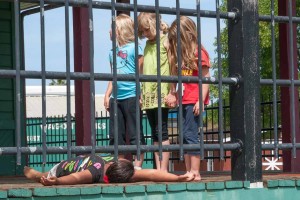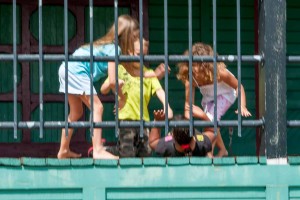A former white supremist tells his story: as he was being served by an African-American waitress,  she saw his hand with its prominent swastika tattoo. “Oh, honey,” she sympathized, “you’re better than that!”
she saw his hand with its prominent swastika tattoo. “Oh, honey,” she sympathized, “you’re better than that!”
These little words from a woman completely lacking in credibility somehow got under his skin. The conversion took years, but gradually he embraced their truth, even founding a ministry to help others find their way out from hate into the inclusive message of Christ.
Seeing with the eyes of Christ is the Gospel call
Like that waitress, Christ invites us to see through the facade of pain and even hate to the God-given reality beneath. Jesus’ Parable of the Samaritan also invites us to see differently.
Two religious officials see the injured man and walk on. They sympathize. But they know their  purpose is to move on, heading to the temple to perform the holy work of worship. The injured man has no place in their picture of obedient faith. The Samaritan knows: the injured man is better than that! He is beloved of God, deserving of sympathy, indeed of every effort possible to bring him to wholeness and healing.
purpose is to move on, heading to the temple to perform the holy work of worship. The injured man has no place in their picture of obedient faith. The Samaritan knows: the injured man is better than that! He is beloved of God, deserving of sympathy, indeed of every effort possible to bring him to wholeness and healing.
Our Samaritan Tree offers us not only the chance to do good deeds, but the opportunity to see our neighbors as part of God’s reality. We see those in need, and know they are meant for more. We see a lost world and know that God’s Creation is better than that. With words of compassion and acts of caring we demonstrate what we know of that sacred vision.
Does it make a difference? Our society is obsessed with evaluation—metrics and standards—all to answer whether the effort is worth our time and energy. In contrast, the wider vision of the Kingdom is built on hope. We might never know, as that waitress probably never knew, what the tiny seeds of our words and actions produce. Those seeds might lie dormant for years before bursting into productivity.
Jesus’ story doesn’t end with the Samaritan returning to find the injured man whole and grateful. Results don’t define the faithful deed. We see a world that belongs to Christ. We see a world that needs Christ. We see ourselves as bearers of that vision of wholeness that the world needs. Then we can see what we can do.
